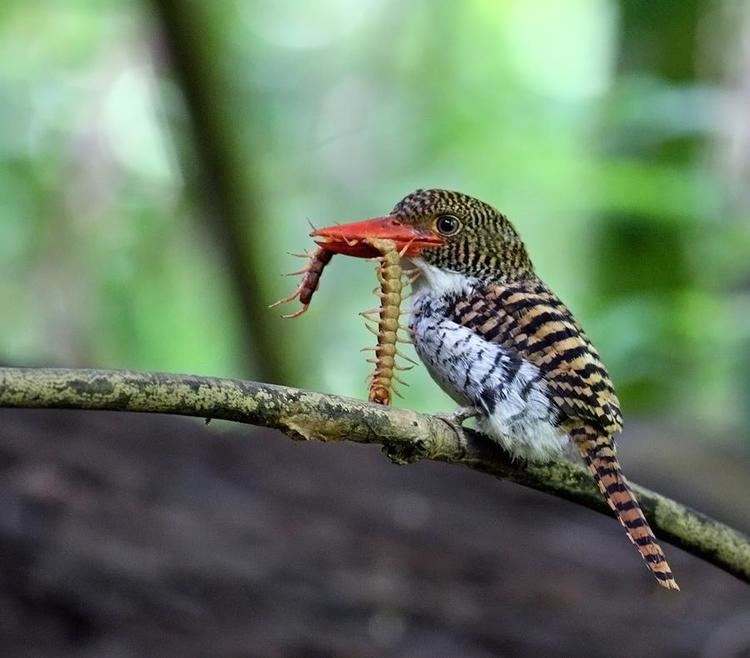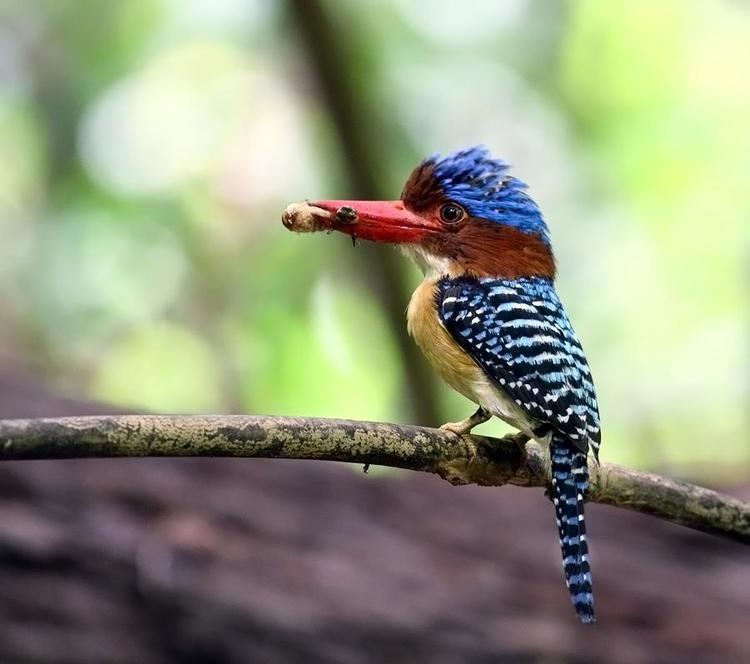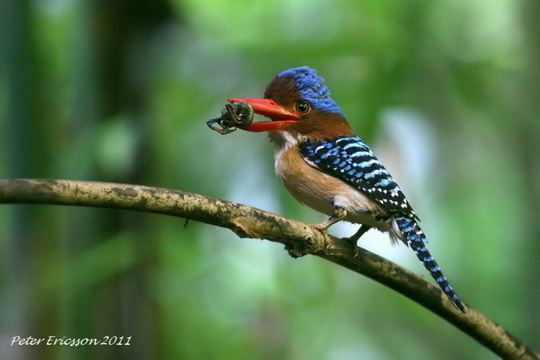Subfamily Halcyoninae Phylum Chordata Rank Species | Family Alcedinidae Scientific name Lacedo pulchella Higher classification Lacedo | |
 | ||
Similar Lacedo, Rufous‑collared kingfisher, Collared kingfisher, Pelargopsis, Stork‑billed kingfisher | ||
Banded kingfisher
The banded kingfisher (Lacedo pulchella) is a tree kingfisher found in lowland tropical forests of southeast Asia. It is the only member of the genus Lacedo. Male and female adults are very different in plumage. The male has a bright blue crown with black and blue banding on the back. The female has rufous and black banding on the head and upperparts.
Contents
- Banded kingfisher
- Indigo banded kingfisher
- Taxonomy
- Description
- Distribution and habitat
- Behaviour
- Status
- References

Indigo banded kingfisher
Taxonomy

The first formal description of the species was by the American naturalist Thomas Horsfield in 1821 under the binomial name Dacelo pulchella. The current genus Lacedo was introduced by the German ornithologist Ludwig Reichenbach in 1851. The word Lacedo is an anagram of Alcedo, the Latin word for kingfisher. The specific name pulchella is Latin for "very pretty".
There are three subspecies:

Description

The banded kingfisher is a 20 cm (7.9 in) long with a sturdy red bill and a short crest which is slowly raised and lowered. It shows striking sexual dimorphism compared to most of its relatives. The adult male has a chestnut forehead, cheeks and nape, and a bright blue cap. The rest of the upperparts, wings and tail are black with blue bands. The breast, flanks and undertail are rufous, and the central belly is white.
The adult female is equally striking, with black-and-rufous-banded upperparts, and white underparts with some black bars on the chest and flanks. Young birds are duller than the adult of the same sex, have a brown and orange bill, and dusky barring on the underparts.
The call is a long whistled wheeeoo followed by 15 repetitions of chiwiu in 17 seconds, the second syllable gradually fading away. The banded kingfisher will respond to imitations of its call.
Distribution and habitat
The species occurs in Myanmar, Thailand, Cambodia, Vietnam, Laos, Malaysia, Sumatra, Java and Brunei. It is extinct in Singapore.
Behaviour
This is a bird of lowland rainforest found up to 1,700 m in Brunei, but normally below 1100 m altitude in the rest of its range. Unlike most kingfishers, it does not need pools or streams in its territory.
The nest is a hole in a rotting tree trunk, or sometimes in the spherical nest of tree termites. Two to five white eggs are laid. In Thailand the eggs are laid between February and May.
The banded kingfisher hunts large insects and occasionally small lizards, usually taken in the trees, but sometimes from the ground.
Status
This species is uncommon but widespread in much of its range. It is rare in Java, very rare in Sumatra and extinct in Singapore.
